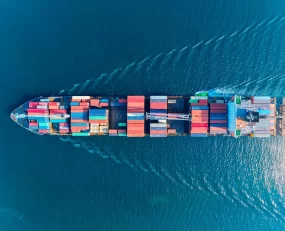
Whilst shippers in Europe and the Middle East wrestle with the confusion caused by the attacks on shipping in the Red Sea, those in North America are still dealing with the problems caused by the low water levels on the Panama Canal. Consignments are being routed through the West Coast where previously they had been sent through the Canal to the East Coast.
The US East Coast ports are suffering. For example, total container volumes handled by the Georgia Ports fell by 10% year-on-year in November, confirming a trend over the quarter. In contrast a major beneficiary has been the Port of Los Angeles which has seen volumes jump. In November the total TEUs handled rose by 19.4% as compared to November 2023, whilst loaded imports and exports jumped by a quarter year-on-year. This growth has been focused on the latter half of the year, with annual throughput is still down by 14% compared to the whole of 2022.
Georgia Ports point-out that higher rainfall has increased the water levels in the canal and that has resulted in an increase of 4 ships a day, to 24, scheduled to pass through the canal by mid-January. However, it is unclear if the volumes transiting the canal will continue to increase or if the lower capacity will be sustained in the medium-term. If the latter, it represents a dent to the competitive position of the East Coast ports. They had emerged as a powerful alternatives to the troubled West Coast ports, with heavy investment in new infrastructure underling their efficiency. Their market position will weaken if the Panama Canal capacity remains constrained or even just unpredictable.
What both examples illustrate is the necessity of building flexibility into logistics provision. ‘Choke points’ in any system are potential weaknesses and this is especially the case in international trade. The challenge for any trading economy is to build options into the system, something which is perfectly possible, not least through the use of intermodal solutions. The problem is the cost, both in capital terms as well as freight rates.
Author: Thomas Cullen
Source: Ti Insights
Supply chain strategists can use GSCi – Ti’s online data platform – to identify opportunities for growth, support strategic decisions, help them stay abreast of industry trends and development, as well as understand future impacts on the industry.
Visit GSCI subscription to sign up today or contact Michael Clover for a free demonstration: [email protected] | +44 (0) 1666 519907